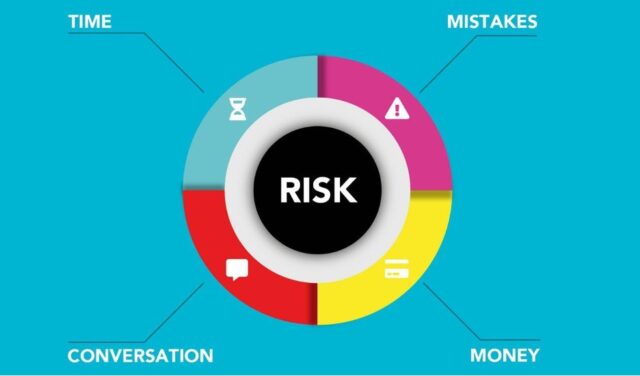
All leadership decisions are subject to risks and threats from day-to-day operations to strategic changes and business goals. Businesses must actively identify and mitigate risks to maintain and sharpen their competitive edge and overcome threats to their survival. Risk mitigation is crucial in reducing the gap between leadership goals and their completion.
Risk mitigation offers a multitude of approaches and strategies to identify and mitigate threats within the organization and its environment. Companies must operate within the confines of corporate legislation and governance imposed to regulate their industry sectors. Falling outside the legislative structure runs the risk of legal complications, finance-draining lawsuits, negative publicity, and punitive sanctions.
Each industry structure demands a unique approach to risk assessment and mitigation. Businesses must actively build and improve their risk mitigation infrastructure and resources to flourish and thrive in their corporate ecosystems. Devising a comprehensive risk mitigation strategy can prove overwhelming, particularly for small businesses and startups. This article will help you grasp dynamic risk mitigation techniques as a professional.
Assembling a Formidable Team
Legal and financial experts are skeptical but focused on crunching numbers and identifying legal loopholes. Their expertise in highlighting financial and legal risks can often be blamed for killing creative pursuits and dreams in their inception. But it’s crucial to understand that well-outlined financial and legal structures are more achievable than pipe dreams. Ambitious business leaders must surround themselves with highly skilled and experienced legal and financial advisors.
Numerous legal and financial constraints impede business operations and goals, and overcoming these challenges is crucial to ensuring survival and success. Legal and economic systems have undergone complex digital transformations in recent years, giving birth to novel challenges. There’s a burgeoning demand for digitally savvy and well-certified professionals and executives to mitigate legal and financial risks.
Business owners, startup founders, and managers must pursue an online course business law to familiarize themselves with legal strategies for business growth. Understanding legal concepts, regulations, and loopholes allow entrepreneurs to benefit from tax exemptions and avoid legal complications.
Combining continual learning endeavors with a full-time job isn’t easy, especially for business owners who must work tirelessly. We advise professionals to take the e-learning route to enjoy flexibility and accessibility while advancing their skills and expertise.
Risk Assessment and Mitigation
Businesses must cultivate the potential to implement risk assessment and mitigation strategies with pragmatic and legally-sound approaches. Companies cannot mitigate risks without a comprehensive infrastructure to identify and evaluate threats. Mitigation demands an acute level of preparedness to monitor all business operations and elements and identify risks without delay.
This endeavor demands a sophisticated risk assessment infrastructure that alerts professionals about emerging and existing risks. Businesses need a team of capable professionals and executives to evaluate risks and explore mitigation strategies. It’s crucial to understand that not all risks can be mitigated, and businesses have to work towards risk acceptance, avoidance, and reduction.
Some risks exist within the ecosystem, and businesses must coexist and maintain operations with risk acceptance strategies. Some risks are easily avoided, and in some cases, businesses have to find a residual risk level to establish risk-gearing capabilities. All risk management approaches demand an in-depth understanding of financial and legal compliance structures to ensure effective mitigation and response.
Transferring Risk to Trusted Partners
Assuming that a company can effectively manage and mitigate all risks impeding its profitability potential is naïve and unrealistic. Most importantly, attempting to mitigate and gear all risks with business resources leads to unprecedented financial strain. Business leaders should operate with a practical mindset and undertake efficient provisions to manage and transfer immitigable risk factors.
Risk transfer is a dynamic risk mitigation strategy that transfers risk to trusted third-party partners and entities. Outsourcing risk transfers are crucial to ensuring corporate survival and avoiding overconsuming resources while mitigating threats. These third-party partners include insurance companies, banks, financial institutions, leasing companies, and legal consultants,
It’s pertinent to note that risk transfer doesn’t always come at low costs. Business leaders must balance the costs and benefits of risk transfer to prevent future damage. It all boils down to finding trusted providers that help you transfer risks at low costs. For instance, insurance comes at a monthly fee and averts millions’ worth of losses.
Adopting Risk Mitigation Analytics
All business activities generate data, carrying valuable insights into existing and emerging threats. Data points to internal and external threats that can impede business operations, undermine productivity and minimize profitability. However, processing, analyzing, and visualizing data demands a comprehensive analytics infrastructure.
Businesses rely on analytical tools and qualified data scientists to extract valuable and actionable risk mitigation insights from datasets. Data is useless if it isn’t harnessed and studied using analytical tools. Setting up an analytical infrastructure and acquiring top talent may seem like a costly and burdensome endeavor but worth it.
Creating a Comprehensive Strategy
The acquisition of talent and infrastructure is useless without a detailed and comprehensive strategy to utilize existing resources. Business leaders must equip their company with a risk assessment and mitigation strategy to establish standard operating processes. For instance, risk assessment experts must alert C-suite executives immediately upon identifying risks.
Then, executive leaders and data experts must evaluate risks and explore mitigation strategies. This endeavor demands skeptical financial and legal advisors to offer input, while the analytics team must run predictive analyses. Combining human intelligence with data analytics is crucial to establishing practical and strategic risk mitigation standards.
A strategy offers a road map for all departments to coordinate risk mitigation efforts and prevent threats from impeding operations. Risk assessment and mitigation are ongoing efforts that demand an organization-wide strategy to take all employees on board.
Final Thoughts
Corporate survival demands businesses actively identify and mitigate risks to maintain profitability and productivity. Even the slightest lapses and delays can allow risks to aggravate, resulting in losses, legal complications, and financial constraints. Executives must establish a thriving and innovative risk management infrastructure and acquire human intelligence to harness technological solutions.
Measuring and evaluating risks allows the leadership to achieve its envisioned goals and work towards strategic expansion. In contrast, avoiding and denying risks results in overwhelming challenges that drive companies towards bankruptcy and legal turmoil. Setting up an elaborate infrastructure and investing in human intelligence is the most practical approach to risk management.
Business owners are strongly advised to build their risk gearing capabilities and acquire relevant skills to understand emerging threats.


































